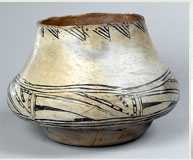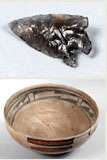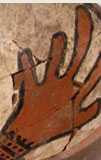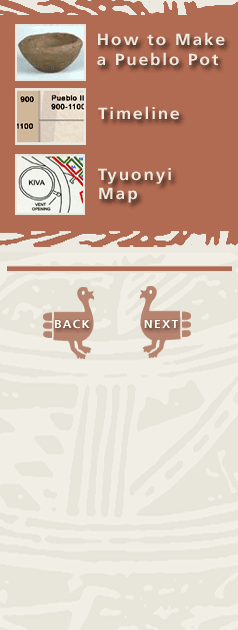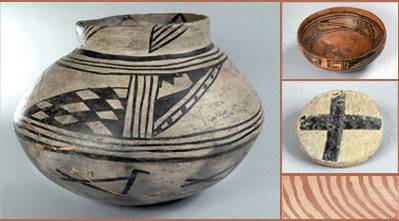Ancestral Pueblo culture, also known as Anasazi, originated in the Four Corners Area where New Mexico, Arizona, Utah and Colorado meet. Archeologists believe the Ancestral Pueblo descended from nomadic hunting and gathering peoples who came to the region over 12,000 years ago. After 1100 AD, small groups of Ancestral Pueblo people arrived on the Pajarito Plateau, that includes the present-day Bandelier. They came with skills in farming, tool making, weaving, and pottery making.
For generations people lived in small, scattered settlements. From AD 1150 to 1325, during the Rio Grande Coalition Period, the population increased. Pueblos [villages] often included up to 40 rooms. For the next 250 years, called the Rio Grande Classic Period, pueblos grew larger. Some exceeded 600 rooms. Ceremonial rooms called kivas also grew larger, possibly reflecting ritual or social changes. |
|
| Ancestral Pueblo people grew corn, beans and squash in an arid land. Native plants and deer, rabbits, squirrels and birds supplemented their diets. People made clothing from animal skins and woven cotton. Tools, including axes and knives, were made from animal bone and local stone such as obsidian, basalt and tuff [compacted volcanic ash] from the Jemez Volcano area. Turquoise, shell, parrots and other items were traded from as far as central Mexico and Baja California. |
| The Pueblo people left the area in the 1500s, before the Spanish arrived. They settled along the Rio Grande Valley not far from Bandelier. Their descendents live today in nearby pueblos including San Ildefonso and Cochiti. San Felipe, Santo Domingo, and Zuni Pueblos also recognize cultural connection with the area. |
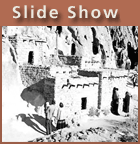 |

Pottery in the Southwest dates back over 2,000 years. It is still made the same way today. Prehistoric Pueblo vessels held water, stored seed and grain, and were used for cooking. They were hand-coiled, smoothed and polished. After designs were applied with a yucca-leaf brush, vessels were fired outdoors. Each group made distinctive pottery that was traded throughout the Southwest. People brought their distinctive decorative styles to the Bandelier area. The earliest pots were undecorated grey cooking ware. Later, potters made white pots with black geometric designs, known as Santa Fe Black-on-White. Small animal figurines have been made in the Bandelier area from over 800 years ago to the present.
Fired clay is durable. Because it withstands moisture and insects, Southwestern archeological sites are rich in Ancestral Pueblo pottery. As ceramics are breakable, often all we see are pottery sherds and sometimes intact vessels. Designs and shape change over time. Chemical content yields clues. These can tell us about date, place of origin, trade, migration and settlement patterns, and cultural preferences.
|
|
 |

Between 500 - 900 years ago people on the Pajarito Plateau created homes of stone, mud and wood. Similar architecture can be seen at the modern pueblos surrounding Bandelier National Monument. Houses are still massed together surrounding a central plaza. Many ancient building techniques, including wall and roof construction, are still used today.

Archeologists and collectors used the term Anasazi to refer to prehistoric Pueblo peoples. It is a Navajo term that means “the Ancient Ones, ancient enemy or enemy ancestors.” Many modern Pueblo people prefer to use the term Ancestral Pueblo people.
|
|
| |

